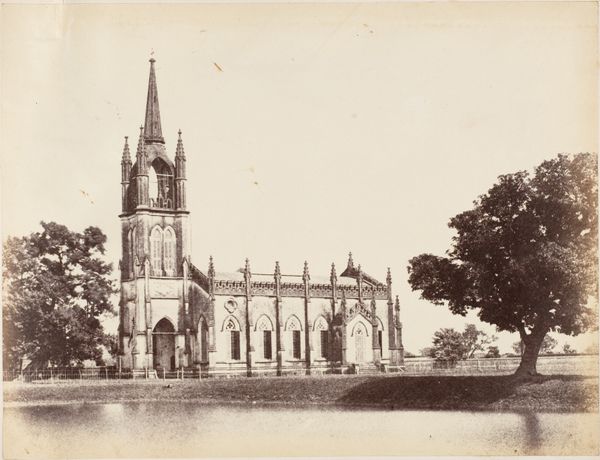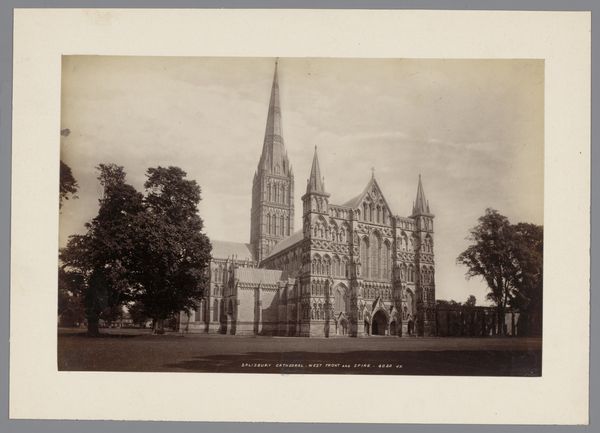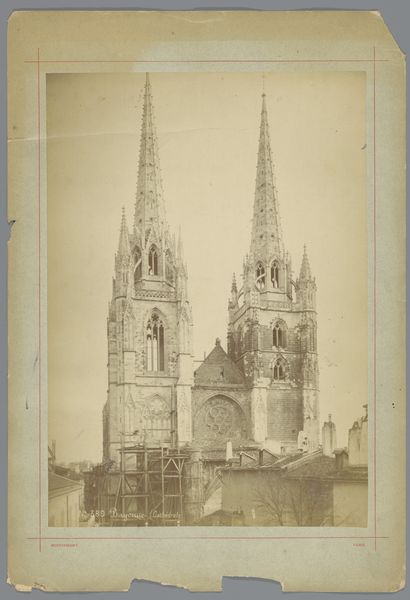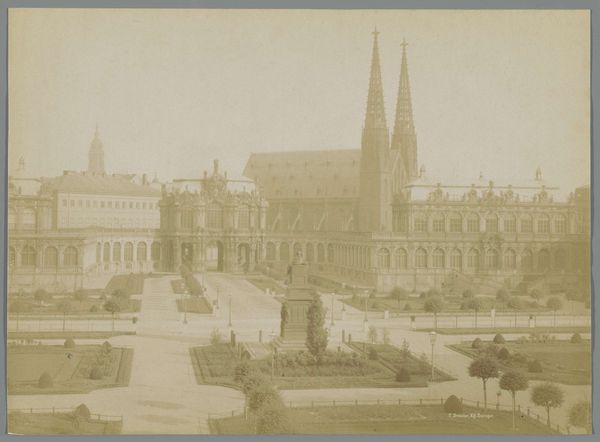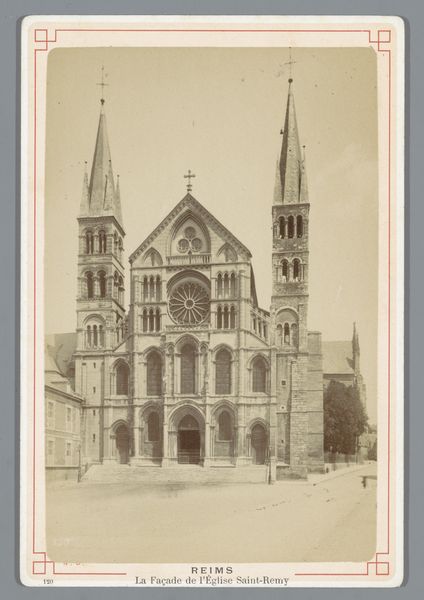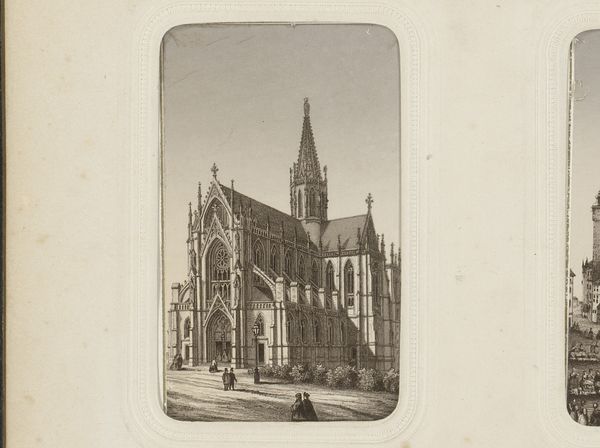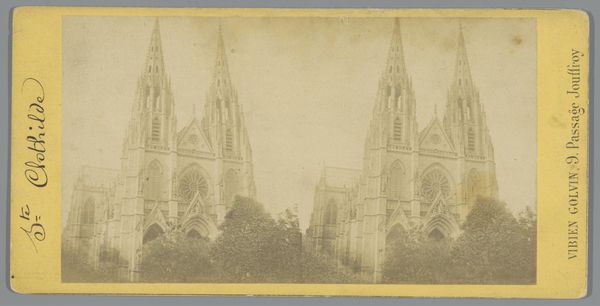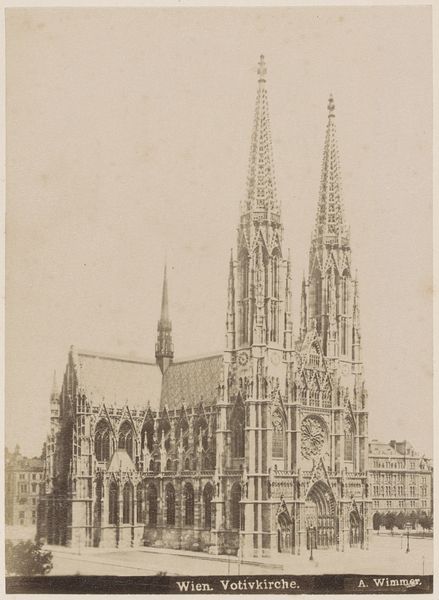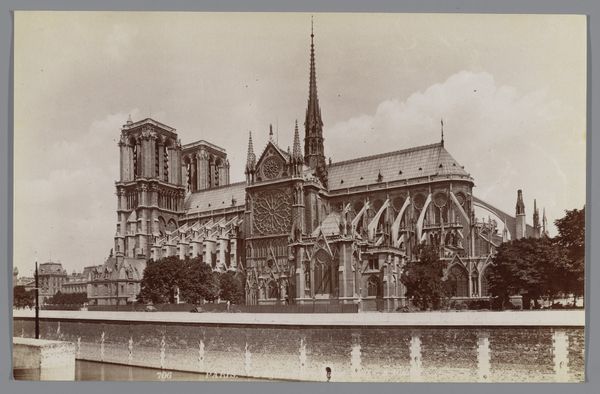![[The St. Pauls Cathedral, Calcutta] by Captain R. B. Hill](/_next/image?url=https%3A%2F%2Fd2w8kbdekdi1gv.cloudfront.net%2FeyJidWNrZXQiOiAiYXJ0ZXJhLWltYWdlcy1idWNrZXQiLCAia2V5IjogImFydHdvcmtzLzY5YzVjNWMzLTkxNWMtNDc4Zi04MmU0LTQ1NjEwMWM3MDFiNC82OWM1YzVjMy05MTVjLTQ3OGYtODJlNC00NTYxMDFjNzAxYjRfZnVsbC5qcGciLCAiZWRpdHMiOiB7InJlc2l6ZSI6IHsid2lkdGgiOiAxOTIwLCAiaGVpZ2h0IjogMTkyMCwgImZpdCI6ICJpbnNpZGUifX19&w=3840&q=75)
photography, gelatin-silver-print, architecture
#
architectural landscape
#
landscape
#
photography
#
arch
#
gelatin-silver-print
#
19th century
#
architecture
Dimensions: Image: 18.5 x 24 cm (7 5/16 x 9 7/16 in.) Mount: 21.2 x 27.7 cm (8 3/8 x 10 7/8 in.)
Copyright: Public Domain
Captain R. B. Hill captured St. Paul’s Cathedral in Calcutta in this photograph of indeterminate date. Calcutta, now Kolkata, presents a fascinating case study of British colonial influence in India. The Cathedral stands as a grand architectural symbol of British presence, reflecting their religious and cultural values imposed upon the Indian landscape. The Gothic Revival style starkly contrasts with the local architecture, creating a visual hierarchy that asserted British dominance. Consider the role of photography during this era. It served as a tool for documenting and promoting colonial power, reinforcing the idea of British superiority. What does it mean to have a Captain, presumably a member of the occupying army, as the photographer? To fully appreciate this image, we need to research the history of British colonialism in India, architectural trends of the time, and the use of photography as a propaganda tool. Understanding the social and institutional context of the artwork helps us interpret its meaning beyond a simple depiction of a building.
Comments
No comments
Be the first to comment and join the conversation on the ultimate creative platform.

